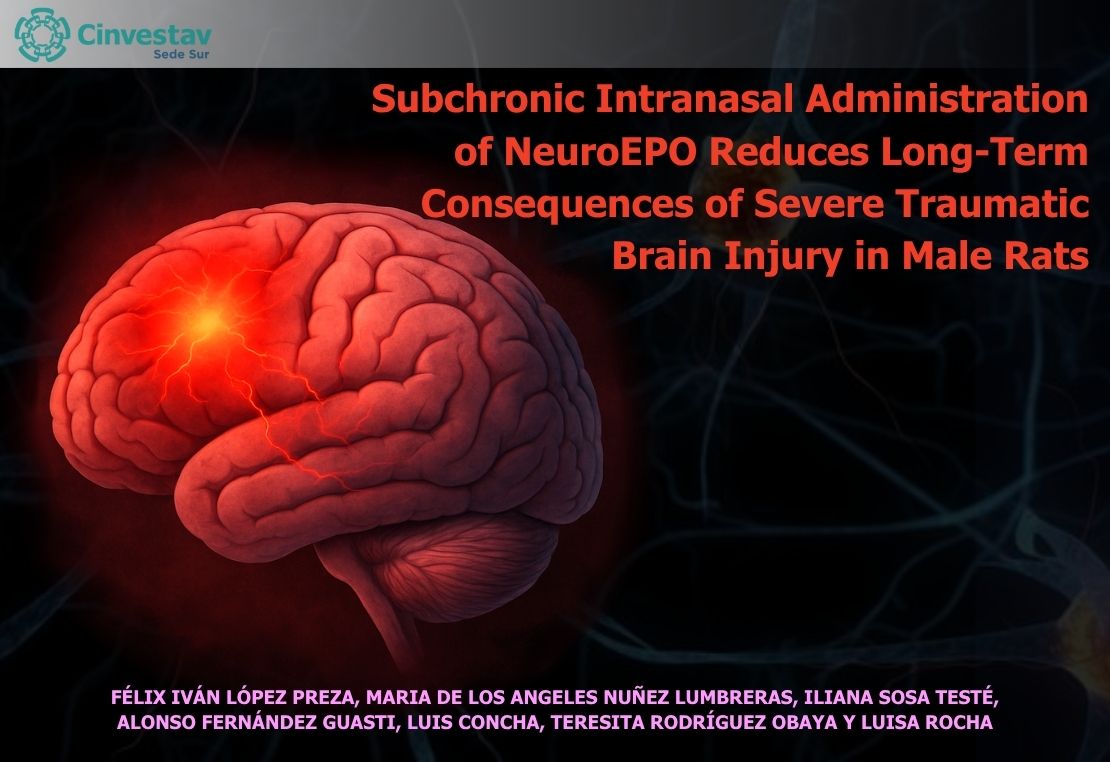Dra. Luisa Rocha - Subchronic Intranasal Administration of NeuroEPO Reduces Long-Term Consequences of Severe Traumatic Brain Injury in Male Rats

junio 2025
Te invitamos a leer el artículo: "Subchronic Intranasal Administration of NeuroEPO Reduces Long-Term Consequences of Severe Traumatic Brain Injury in Male Rats", realizado por la Dra. Luisa Rocha, investigadora de la Sede Sur del Cinvestav.
Autores: Félix Iván López Preza, Maria de los Angeles Nuñez Lumbreras, Iliana Sosa Testé, Alonso Fernández-Guasti, Luis Concha, Teresita Rodríguez Obaya y Luisa Rocha
Abstrac: Current treatments fail to prevent long-term consequences induced by a severe traumatic brain injury (TBI). This study aimed to evaluate the efficacy of repetitive intranasal administration of NeuroEPO (a derivative of erythropoietin) on long-term alterations after a severe TBI induced by the application of a lateral fluid percussion in male rats. A otal of 30–31 days after the trauma, TBI+vehicle group showed sensorimotor dysfunction (Neuroscore, p < 0.0009; beam walking test, p < 0.0001 vs. Sham+vehicle group) and depressive-like behavior suggested by increased immobility (p = 0.0009 vs. baseline) during the forced swim test. Rats also showed increased production of malondialdehyde (a marker of oxidative damage), increased catalase activity (an antioxidant enzyme), and atrophy of brain areas evaluated with Magnetic Resonance Imaging 31 days after the trauma. TBI+NeuroEPO group received intranasal administration of NeuroEPO (0.136 mg/kg) starting 3 h post-TBI and continued every 8 h for four days. This group showed less sensorimotor dysfunction (Neuroscore, p = 0.020; beam walking test, p = 0.001, vs. TBI+vehicle group) and normal immobility behavior (p = 0.998 vs. Sham+vehicle group). Levels of malondialdehyde and catalase as well as the volume of brain structures of this group were like the Sham+vehicle group. These findings support the potential of NeuroEPO as a therapeutic agent to reduce long-term consequences of TBI.
Keywords: traumatic brain injury; NeuroEPO; sensorimotor function; oxidative stress; depression-like behavior; magnetic resonance imaging.